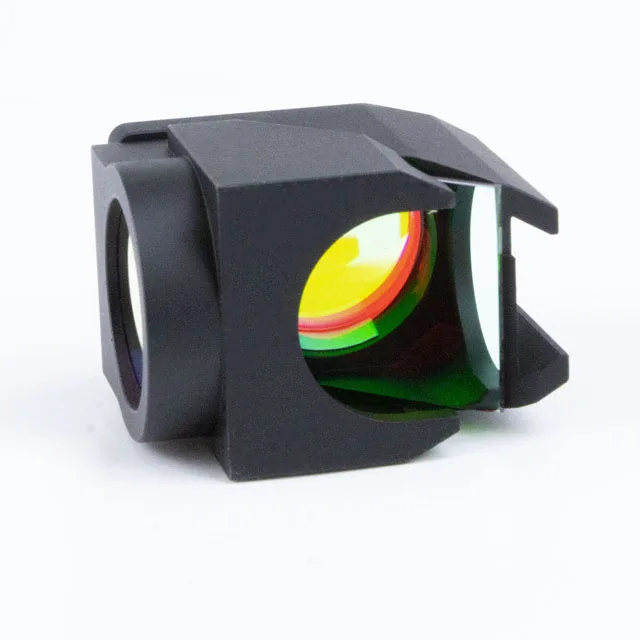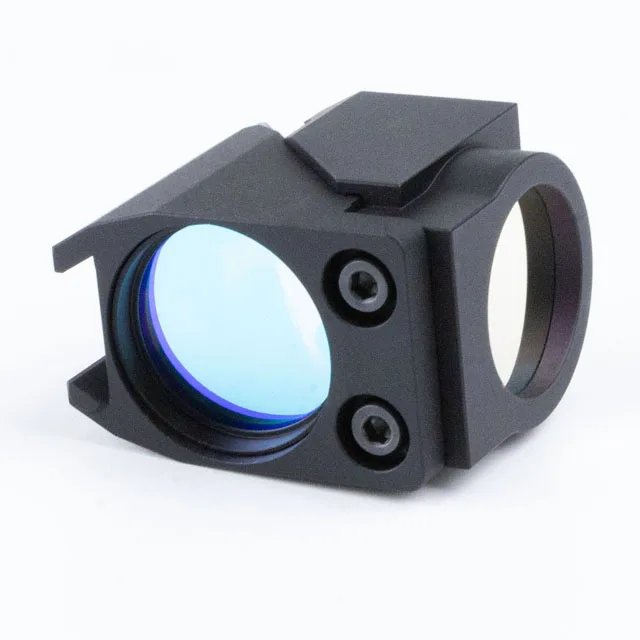Are you interested in the microscopic world? Exciting times await! But, before diving in, there’s a crucial decision to make: choosing the right microscope. With countless options available, making the best choice can feel daunting. Don’t fret! This guide will simplify the process, offering clear steps to match you with your ideal microscope. Whether you’re a curious hobbyist, a budding student, or a professional researcher, we’ve got you covered. Let’s find that perfect fit together!
Discovering the Microscope Fluorescence Filter Cube
In simple terms, this cube helps see specific things under a microscope. How? By using something called fluorescence. Fluorescence makes certain parts of a sample light up. When they light up, we can see them. It’s like shining a spotlight on a star performer!
The filter cube is a vital part of this process. Think of it as a special pair of sunglasses. These “sunglasses” let only certain light waves pass through. By doing this, it makes sure the right parts of your sample shine bright.
So, why is the version so special? First, they have top-notch quality. This ensures clear, bright images every time. Second, they offer various cube types. Each one targets different light waves. This means you can view many different samples with ease.
Using the cube is also pretty straightforward. You simply insert it into the microscope. It completes all the tasks once in place. No fuss, no stress.
A bonus? The cubes are durable. With proper care, they’ll last a long time. This means more time for exciting discoveries!

How can I decide which microscope is best for me?
Picking a microscope can be a bit confusing. Where do you begin when there are so many options? Fear not! We’ve got you covered. Here’s a simple guide to help you decide which microscope is best for you.
1. Determine Your Purpose
Hobbies:
If you’re a hobbyist, you might not need extreme magnification. Instead, you’d want something that gives you a clear, broad view.
Study:
For academic purposes, it’s essential to have good magnification and clarity. The focus should be on examining detailed structures of specimens, like tissues or bacteria.
Research:
Scientists and professionals might need advanced features. This can include high-end optics, precise controls, or even digital capturing capabilities.
2. Understand Microscope Types
Compound Microscopes:
These microscopes use two sets of lenses: the objective and the eyepiece. By combining these lenses, they offer higher magnification. They’re ideal for looking at things like bacteria or thin tissue slices.
Stereo Microscopes:
Also known as dissecting microscopes, they offer a 3D view. With two separate light paths, they give depth perception, making them perfect for examining solid objects like rocks, insects, or plants.
Digital Microscopes:
Modern tech meets microscopy! These units connect to computers, tablets, or even TVs. They often come with software to capture and analyze images.
3. Consider Magnification
Low magnification (10x to 40x):
You can observe larger specimens, like leaves, with full details.
Medium magnification (100x to 400x):
At this range, you can see finer details. It’s perfect for things like prepared slides of tissues or microorganisms.
High magnification (1000x and up):
This range allows you to observe minute structures, like bacteria or the internal parts of cells.
4. Think About Portability
Portable designs are often battery-operated and compact. They’re great for field trips or if you have limited space.
Non-portable designs tend to be bulkier but might offer better stability and features.
5. Check the Lighting
LED lights are popular as they’re bright and energy-efficient. They also stay cool, ensuring samples don’t get overheated.
Some microscopes offer top and bottom lights. This is useful for viewing both transparent and opaque specimens.
6. Decide on a Budget
While premium microscopes offer advanced features, many mid-range and budget-friendly options deliver excellent performance.
Consider features you genuinely need, so you don’t overspend on unnecessary bells and whistles.
7. Digital Features
Digital microscopes or those with camera attachments can be incredibly useful. They allow you to save and share images, making documentation or collaborative study much easier.
8. Check Reviews and Brands
Brands with a long-standing reputation often produce reliable and quality products.
Reviews can give you insights into user experiences, helping you avoid common pitfalls or discover hidden gems.
9. Test Before You Buy
If you’re purchasing in-store, ask for a demo. If online, see if there are video reviews or demonstrations available.
Testing helps you understand the user experience, from adjusting the focus to changing slides.
10. Ask for Help
Engaging with a community, like forums or social media groups dedicated to microscopy, can offer invaluable insights.

What is the best microscope filter for you?
Choosing the right microscope filter significantly enhances your viewing experience. One of the best options available is the “Microscope Cube for 25mm Filter.” Here’s why this filter:
Optimal Size: The 25mm size perfectly fits many microscope models, ensuring easy compatibility.
High-Quality Materials:Optolong is renowned for its top-notch quality. This cube is no exception, promising longevity and durability.
Clarity in Viewing: Optolong’s cube offers unparalleled clarity, letting you see specimens in crisp detail.
Easy Installation: Swapping filters can be tricky. However, the microscope Cube ensures a hassle-free setup.
Advanced Technology: With Optolong, you’re getting the latest in microscopic technology. It’s a brand professionals trust.
Improved Contrast: This filter cube aids in enhancing the contrast, making it easier to differentiate structures.
Versatility: Whether you’re a student, researcher, or hobbyist, the fluorescence microscrope Cube caters to all needs.
If you’re searching for the best microscope filter, the Optolong Cube Filter should be at the top of your list. Invest in quality and see the microscopic world like never before!
To Sum It Up
Choosing a microscope is like investing in a tool that opens up a new world for you. By understanding what you need, considering your budget, and doing thorough research, you’ll be well-equipped to make the right choice. Happy viewing!
